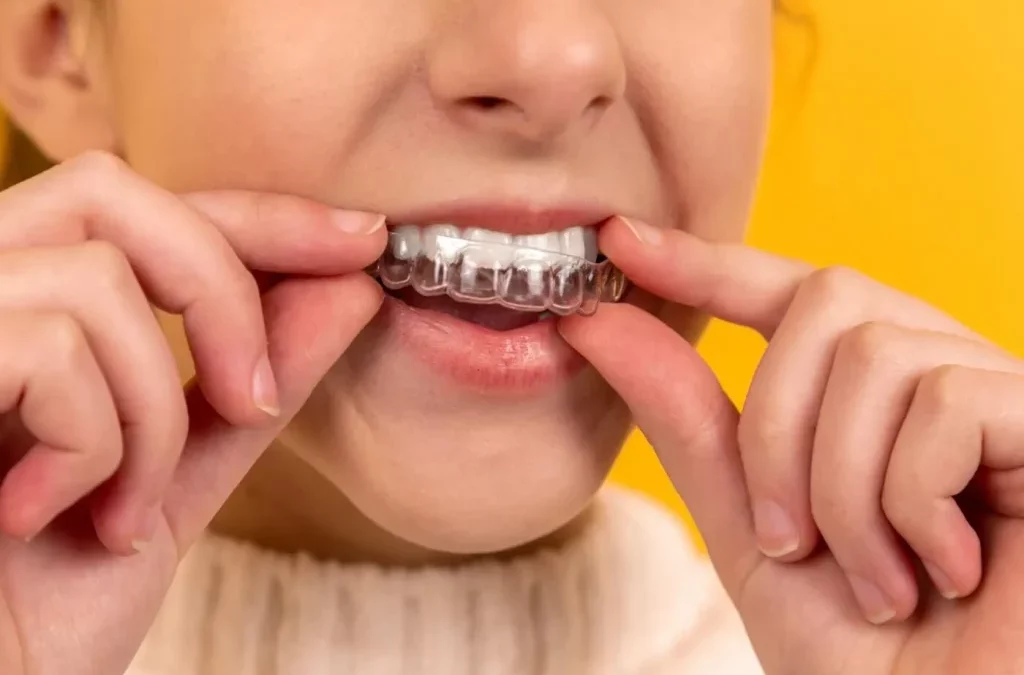In the world of orthodontic treatment, two popular options stand out: Invisalign and traditional braces. Both methods aim to straighten teeth and correct bite issues, but they differ in their approach, appearance, and overall experience. Deciding between Invisalign and braces requires careful consideration of factors such as treatment goals, lifestyle preferences, and personal comfort. Below, we explore the key differences between Invisalign and braces to help individuals make an informed decision about their orthodontic treatment.
Appearance and Discretion
One of the most significant differences between Invisalign and braces is their appearance. Invisalign aligners are virtually invisible when worn, as they are made of clear plastic and fit snugly over the teeth. This makes them a popular choice among individuals who desire a more discreet orthodontic treatment option. In contrast, traditional braces consist of metal brackets bonded to the teeth and connected by wires. While advances in orthodontic technology have led to the development of ceramic braces and clear brackets, traditional braces are still more noticeable than Invisalign aligners.
Comfort and Convenience
Invisalign aligners offer a higher level of comfort and convenience compared to traditional braces. The smooth plastic material of Invisalign aligners is less likely to cause irritation or discomfort to the gums and cheeks, as there are no metal components rubbing against the soft tissues of the mouth. Additionally, Invisalign aligners are removable, allowing individuals to eat, drink, brush, and floss without any restrictions. This flexibility makes Invisalign a convenient option for individuals with busy lifestyles or specific dietary preferences.
Treatment Duration and Adjustments
The treatment duration and frequency of adjustments differ between Invisalign and braces. Invisalign treatment typically takes about 12 to 18 months on average, depending on the complexity of the case. During this time, individuals wear a series of progressively adjusted aligners, changing them every one to two weeks as directed by their orthodontist. In contrast, traditional braces may require longer treatment durations, often ranging from 18 to 36 months. Additionally, individuals with braces must visit their orthodontist regularly for adjustments and tightening of the wires.
Effectiveness and Treatment Outcomes
Both Invisalign and braces are effective at straightening teeth and correcting various orthodontic issues, including crooked teeth, gaps, and bite alignment problems. The choice between Invisalign and braces ultimately depends on the individual’s specific orthodontic needs and treatment goals. In general, braces may be more suitable for addressing complex or severe malocclusions, as they offer greater control over tooth movement and bite adjustments. However, Invisalign is often preferred for mild to moderate cases of malocclusion, offering a discreet and comfortable treatment option with predictable outcomes.
Cost Considerations and Insurance Coverage
Cost considerations and insurance coverage may also influence the decision between Invisalign and braces. Invisalign in Coweta OK or anywhere else tends to be more expensive than traditional braces, as it involves custom-made aligners and advanced digital technology. However, the overall cost of treatment can vary depending on factors such as the complexity of the case, the duration of treatment, and the orthodontist’s fees. Additionally, some dental insurance plans may cover a portion of the cost of orthodontic treatment, including braces or Invisalign, so it’s essential to check with your insurance provider to understand your coverage options.
Personal Preference and Lifestyle Factors
Ultimately, the decision between Invisalign and braces comes down to personal preference and lifestyle factors. Some individuals may prefer the discreet appearance and convenience of Invisalign aligners, while others may prioritize the effectiveness and affordability of traditional braces. Consider factors such as your aesthetic preferences, comfort level, dietary habits, and oral hygiene routine when choosing between Invisalign and braces.
Conclusion
Choosing between Invisalign and braces requires careful consideration of factors such as appearance, comfort, treatment duration, effectiveness, cost, and personal preference. Both Invisalign and braces offer effective solutions for straightening teeth and correcting orthodontic issues, but they differ in their approach and overall experience. Consulting with a qualified orthodontist is essential to determine the best treatment option to meet your specific needs and goals.

